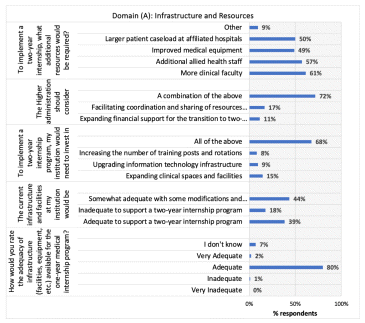
Figure 1 Respondents’ ratings of domain (A) infrastructure and resources
Omayma Hamed1, Nourhan Wasfy2, Ramy Saleh3, and Mennatallah Rizk4
1MD, PhD, Professor & Director of Medical Education, Medical Education Administration, Armed Forces College of Medicine, Cairo, Egypt
2MD, PhD, Assistant Professor, Medical Education Department, Suez Canal University, Ismailia, Egypt
3MD, PhD, Paediatrics Department, Armed Forces College of Medicine, Cairo, Egypt
4MD, PhD, Lecturer, Medical Education Department, Alexandria University, Alexandria, Egypt
Abstract
Background: The transition from a one-year to a two-year medical internship program represents a significant shift in medical education, aiming to improve training quality and clinical readiness. While these reforms are increasingly adopted, they face challenges that must be addressed to support successful implementation. This study examines faculty perspectives on the transition process, focusing on key challenges and opportunities associated with extended internship programs. Methods: We conducted a cross-sectional, survey-based study from October 2022 to October 2023, using both quantitative and qualitative methods. A total of 319 faculty members from 17 medical schools participated, providing insights into critical aspects of the transition. Results: The study revealed several challenges: 68% of faculty reported infrastructure inadequacies for a two-year program, with public colleges and training hospitals highlighting limited physical and technological resources. Furthermore, 73% of respondents identified a need for qualified supervisors and emphasized upskilling existing faculty for effective mentorship. Concerns over training quality were also noted, with 65% rating the current one-year program as “fair” or “inadequate.” Ethical considerations were highlighted by 90% of respondents, who were uncertain about clear guidelines for intern well-being, while 98% indicated an absence of effective information systems to track intern progress. From these findings, we developed a systems-thinking framework across three levels—macro (national policies and strategies), meso (institutional resources and quality assurance), and micro (program-specific supervision and curriculum). This framework addresses these challenges comprehensively, offering strategies for sustainable improvement. Discussion: The results indicate that transitioning to a two-year internship requires substantial resource investments, robust supervision structures, and ethical safeguards. The systems framework provides a multi-level approach that can guide similar reforms in diverse settings, focusing on quality improvement and coordinated efforts among stakeholders.
Key Words: Medical Internship, transition, two-years program, systems approach, framework, quantitative & qualitative analysis
Date submitted: 8-October-2024
Email: Omayma Hamed (dr.omayma.hamed@gmail.com)
This is an open access journal, and articles are distributed under the terms of the Creative Commons Attribution-Non Commercial-Share Alike 4.0 License, which allows others to remix, tweak, and build upon the work non-commercially, as long as appropriate credit is given and the new creations are licensed under the identical terms.
Citation: Hamed O, Wasfy N, Saleh R, and Rizk M. Development of a systems-based framework for transition from a one- to two-year medical internship program. Educ Health 2024;38:31-45
Online access: www.educationforhealthjournal.org
DOI: 10.62694/efh.2025.204
Published by The Network: Towards Unity for Health
A medical internship is a crucial phase in a physician’s training, bridging the gap between medical education and independent practice. It provides practical training under supervision, offering essential support, feedback, teaching, and assessment.1 However, the effectiveness of this phase varies, impacting the preparedness of new physicians.2,3
Traditionally, medical internships last one year, following six years of medical school. This format allows graduates practical experience across various specialties. However, in response to changes in healthcare and education, countries like Brazil, Egypt, South Africa, and the UK have shifted to a two-year medical internship.4 The UK implemented the two-year Modernising Medical Careers (MMC) foundation program in 2005, emphasizing high-quality training, enhanced supervision, and continuous competency development. This shift aimed to reduce the service delivery burden on trainees, focusing instead on their progression toward the Certificate of Completion of Training (CCT).5
Extending the internship from one to two years creates some challenges, particularly resistance from faculty members. This reluctance is explained by the status quo bias, a preference for maintaining existing practices.6–8 To mitigate this resistance, it is vital to engage faculty in the reform process, allocate time for discussion, clarify objectives, and establish success measures.9
The internship structure has remained largely unchanged and unreviewed for nearly 30 years.10 While there is research on graduates’ perceptions of the two-year program, faculty perspectives are understudied, especially in regions like Africa, the Middle East, and Asia. This study addresses these gaps by exploring faculty views on the transition from a one-year to a two-year internship in Egypt, where the change met resistance due to concerns about the lack of evaluation of the one-year program, and unclear plans for the transition.
By examining the perspectives of faculty involved in the one-year program, this study aims to identify challenges and barriers in the transition. The findings will inform future policy and planning for internship programs, ensuring smoother transitions and more effective implementation. The primary research question central to this study is: What factors enhance or hinder the transition to a two-year medical internship program, as perceived by faculty members? This study will also develop a framework to guide future transitions based on the participants’ responses.
This cross-sectional survey study was conducted between October 2022 and October 2023. The survey primarily consisted of structured, closed-ended questions to gather quantitative data about faculty perspectives on the transition from a one-year to a two-year medical internship program. To provide additional context and deeper insights, the survey also included several open-ended questions, with responses analyzed thematically to complement the quantitative findings. This approach enabled a comprehensive understanding of faculty members’ views on factors influencing the proposed internship program changes.
This study employed a convenience sampling method, recruiting participants through WhatsApp groups that included faculty members from various medical schools. The target population consisted of faculty involved in the development and implementation of the one-year medical internship program, as well as staff from training hospitals affiliated with Egyptian public, private, and military medical schools.
To establish the sample size, we relied on the population available within the identified WhatsApp groups, which consisted of 456 faculty members. A total of 319 respondents voluntarily completed the survey. These participants were categorized based on their institutional affiliations into three groups: governmental; national (private); and military medical schools. Specifically, the sample included faculty from 1 military, 7 private, and 15 public medical colleges, representing a total of 17 medical schools out of 26. To avoid duplicate responses, participants who belong to more than one WhatsApp group were instructed to complete the survey only once.
The diverse representation across these institutions provided a broad range of perspectives. This approach was appropriate given the exploratory nature of the study and the feasibility of reaching targeted participants through existing communication channels.
The survey was designed based on two theoretical frameworks: the WHO Health System Strengthening Framework11 and the Donabedian Framework of Healthcare Quality Assurance.12 The final validated survey included (29) items in five main domains: (A) Infrastructure and resources pooling (5 items); (B) Workforce adequacy (5 items); (C) Training quality & incentivizing supervision (12 items); (D) Ethical considerations (3 items); and (E) Information Systems (4 items). Each domain assessed the faculty perception of both the one-year and two-years program. Additionally, the survey included four open-ended “why” and “how” questions aimed at eliciting qualitative data to explore the reasons and mechanisms underlying respondents’ perspectives.
The survey’s content validation was conducted using the Content Validity Index (CVI) to ensure validity. A panel of four medical education experts rated each item on a 4-point scale: 1: Not relevant; 2: Somewhat relevant; 3: Quite relevant; 4: Highly relevant, with consensus defined as ≥ 75% agreement and a median score of 3 or 4.13 Inter-rater reliability was assessed using the intraclass correlation coefficient (ICC) through ANOVA: Two-factor without replication.14 The survey was piloted on 20% of the sample for clarity, and reliability was measured using Cronbach’s Alpha, with a threshold of ≥ 0.75 considered acceptable.
The validation results showed strong agreement among raters. Initially, 36 items were reviewed, and seven were removed for not meeting the CVI threshold. Reliability analysis yielded a Cronbach’s alpha of 0.94 for the 36-item survey and 0.89 for the final 29-item version, indicating high internal consistency. The ICC value of 0.774 demonstrated good inter-rater reliability.
The survey was created and distributed using Google Forms, which allowed for secure data collection and easy access for participants through the shared WhatsApp link. Survey invitations, including a link, purpose, completion time, consent information, and confidentiality assurances, were sent via WhatsApp to faculty members. Weekly reminders encouraged participation.
Descriptive statistical analysis was conducted on the collected numerical data. The data was systematically organized, summarized and presented as frequencies and relative frequencies (percentages). The qualitative data obtained from the open-ended questions in the questionnaire was thematically analyzed. The process involved open-coding the data. Codes were grouped into categories which were iteratively refined until distinct themes emerged. Themes were then interpreted to understand the underlying meanings related to the study’s objectives. We then examined how these qualitative themes aligned with quantitative survey results, enriching our understanding of key areas needing development for an effective internship program transition. [See Appendix-1]
The total number of participants who responded to the survey was 319 out of 456 constituting a response rate of 70%. Most participants 181 (57%) were affiliated with public medical colleges, followed by 112 (35%) from military medical college, and 26 (8%) from a private college and training hospitals. Regarding academic ranks, professors constituted the largest group, 144 (45%), followed by lecturers, 70 (22%), training hospital staff, 57 (18%), and assistant professors, 48 (15%).

Figure 1 Respondents’ ratings of domain (A) infrastructure and resources
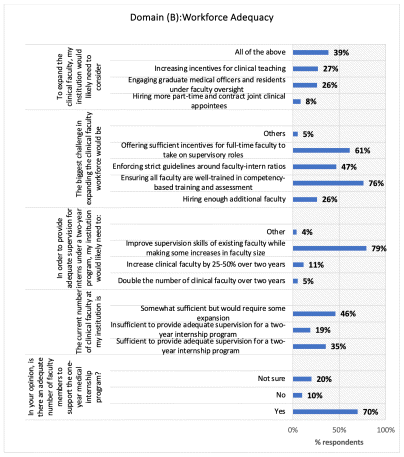
Figure 2 Respondents’ ratings of domain (B) Workforce Adequacy
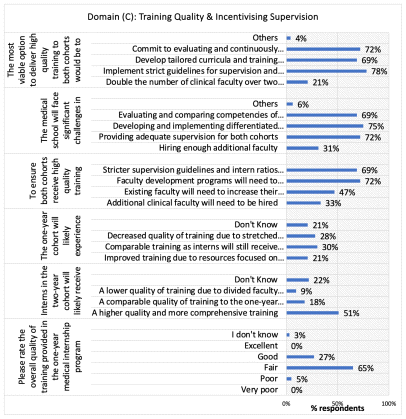
Figure 3 Respondents’ ratings of domain (C) training quality & incentivizing supervision
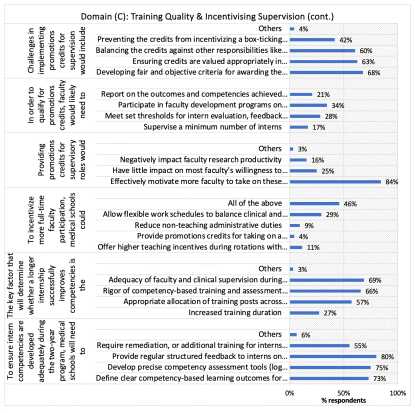
Figure 4 Respondents’ ratings of domain (C) training quality & incentivizing supervision (cont.)
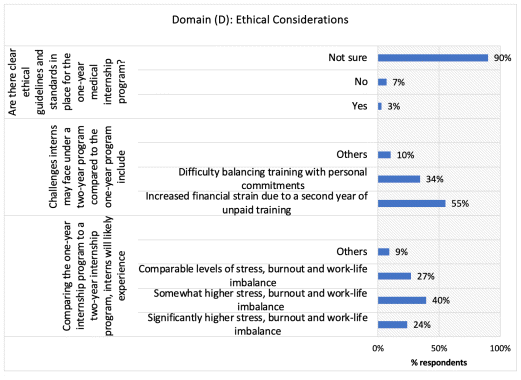
Figure 5 Respondents’ ratings of domain (D) ethical considerations

Figure 6 Respondents’ ratings of domain (E) information systems
Analysis of the responses to the four open-ended questions revealed several key themes. The first question focused on actions needed to improve internship training. Respondents emphasized the necessity of robust supervision, structured competency-based training, and effective assessment methods. They highlighted the importance of increased clinical exposure, enhanced resources (faculty and equipment), clear regulations, accountability, active intern involvement, and a focus on quality improvement. The second question addressed the benefits of extending the internship to two years. Respondents noted enhanced clinical exposure, better competency development, more specialty training opportunities, and reduced pressure on healthcare services. Improved communication skills, increased time for community service, and better career choices for interns were also mentioned. However, a minority viewed the extension as unnecessary. The third question explored curriculum considerations for priority health problems. Respondents stressed the need for competency-based training, linking the curriculum to community health needs, and emphasizing common illnesses and national health issues. They recommended a case-based approach, participation in health campaigns, adherence to evidence-based guidelines, and effective mentorship through portfolios or logbooks. The fourth question asked about resources needed for effective internship training. Respondents called for financial resources to incentivize faculty, well-trained clinical staff, competent leadership, and collaboration between institutions. They also emphasized the need for IT resources like online platforms and simulation centers, improved hospital infrastructure, and a central information system.
In this study, integrating qualitative and quantitative findings enabled a comprehensive understanding of the requirements and complexities of transitioning to a two-year medical internship program. Quantitative results underscored the need for enhanced clinical exposure, faculty development, structured mentorship, and robust infrastructure. The qualitative insights added depth to these findings, revealing specific faculty perspectives on how to address these needs effectively.
For instance, quantitative data highlighted the need for improved supervision and competency development. Qualitative responses contextualized these results, with participants describing practical solutions, such as increased workplace-based assessments, faculty training, and structured competency-based programs. This alignment between quantitative priorities and qualitative descriptions highlighted the theme of robust supervision, directly feeding into the micro-level framework components of supervision quality and curriculum design. Similarly, the quantitative demand for a community-focused curriculum was enriched by qualitative insights suggesting case-based learning and public health campaigns as actionable methods to achieve this aim. This interplay between qualitative and quantitative results reinforced the macro-level framework components, such as healthcare system integration and national policy alignment, fostering a curriculum that addresses both community needs and clinical competencies.
The cross-cutting themes, including continuous quality, flexibility, and evidence-based decision-making, emerged as essential for supporting each framework level. Quantitative findings indicated high support for flexible training durations and continuous improvement, while qualitative data reinforced this with practical strategies for adaptability, quality assurance, and equity in training opportunities. Together, these integrated results reflect a coherent systems-thinking approach that bridges educational and healthcare needs across institutional, organizational, and national levels.
The analysis yielded a comprehensive systems-thinking framework for transitioning from a one-year to a two-year program. This framework is structured across three interconnected levels: macro (national/system-wide); meso (institutional/organizational); and micro (individual/program-specific). These levels are unified by five cross-cutting themes as shown in Figure 7. This multi-level, integrated approach reflects the complex interplay of factors involved in successfully implementing and sustaining an extended internship program, emphasizing the need for coordinated efforts across all levels of the healthcare and educational systems.
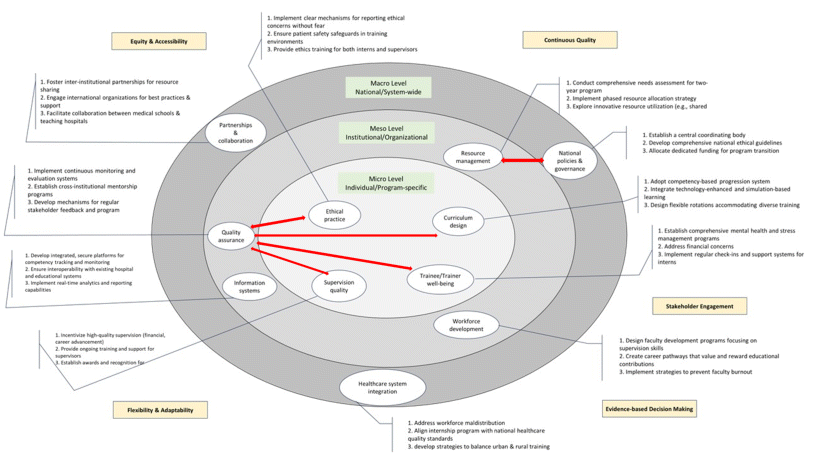
Figure 7 Systems Framework for Transitioning to Two-Year Medical Internship Program
This study offers a foundation for enhancing the two-year medical internship program to improve both medical education and healthcare delivery, particularly in similar contexts worldwide.
While faculty considered the current infrastructure adequate for a one-year internship, they expressed concerns about its sufficiency for a two-year program, reflecting the “quality chasm” often seen between best practices and resource constraints in real-world settings.15 Expanding human, technological, and financial resources aligns with WHO and Donabedian recommendations for scaling health professional education.11,12 Sharma and Cotton have noted that “Healthcare quality and resource constraints are often mutually exclusive,” underscoring the challenge of expanding the program.16 Faculty awareness of the risks of stretched resources highlights the need for careful planning to maintain educational quality during the transition.17
Strategies like comprehensive needs assessments and phased transitions could help manage resource requirements effectively. Institutions may also benefit from inter-institutional resource sharing, increased use of technology-enhanced learning, and stakeholder engagement to ensure effective resource allocation. Additionally, partnerships with local and international organizations can extend resource capabilities and provide diverse rotation experiences for interns. Notably, continuous monitoring and evaluation systems are crucial for assessing resource adequacy throughout the transition.10
Faculty prioritized enhancing supervision skills over simply increasing the number of supervisors, likely due to cost-effectiveness and the continuity provided by well-trained staff.18 Addressing workforce adequacy requires multifaceted strategies, including faculty development programs focused on supervision and workload redistribution through clinician teaching roles or dedicated supervisory positions to prevent burnout.18–21 Technology and simulation-based training can further optimize faculty time and resources.22 Slavin and colleagues suggest that support systems for students, including mental health and stress management resources, can prevent burnout— similar measures could help faculty as well.23
Long-term strategies are also essential for sustaining workforce adequacy. These include creating career pathways that reward teaching and supervision, potentially revising promotion criteria to value educational contributions.24 Partnering with other healthcare institutions for shared teaching responsibilities can also help balance workloads and prevent faculty fatigue.25
The perception of the current one-year program as only “fair” by 65% of respondents highlights the need for quality improvements, aligning with WHO’s emphasis on training and supervision standards.26 Anticipated overlap of one- and two-year programs raises concerns about stretched faculty resources and compromised quality, echoing Tekian and Artino’s findings on challenges in maintaining quality with expanding class sizes.27
To address these concerns and workforce maldistribution, innovative strategies are needed. A centralized body for recruiting, managing, and incentivizing a pool of supervisors could standardize training quality, as seen in the United Kingdom.28 Formal workload reduction systems, like the U.S. Academic Education Value Unit (EVU), could ease faculty burdens.29 Cross-institutional mentorship, using virtual and periodic in-person mentoring, could bring expertise to underserved areas.30 Competency-based progression, which optimizes resources and shortens training for high-performing interns, has shown promise and requires a robust assessment system.10,31,32 Networks of training sites that share resources and rotate trainees can also balance educational opportunities and supervision quality.33
Incentives for supervisors could include financial rewards, career advancement opportunities, access to training or conferences, public recognition, and flexible scheduling to prevent burnout.20,21,24,34,35 The Ministry of Health (MoH) could play a pivotal role by establishing a national quality assurance framework, funding incentives and supervisor training, and coordinating with medical schools. Policies for protected teaching time, a supervisor database, and international partnerships would further strengthen the system. This comprehensive approach ensures continuous quality improvement and equitable resource distribution in medical education reform.10
The uncertainty around ethical guidelines for the current one-year internship program—indicated by 90% of respondents—reveals a significant gap in the ethical foundation of medical education, raising concerns for the proposed two-year program as well. Dyrbye et al. (2014) emphasized that burnout and mental health issues among medical trainees can adversely affect both personal well-being and patient care quality, highlighting the need to prioritize intern welfare in program expansion.36 These ethical issues are fundamental to both the WHO and Donabedian frameworks, which stress the importance of ethical standards and fair practices in healthcare education.37,38 The Australian Medical Council similarly emphasizes clear ethical guidelines and support systems to protect trainees’ well-being.39
Key elements for robust ethical guidelines should include fair treatment, manageable workloads, reporting mechanisms, and patient safety protections. The involvement of ethicists, educators, trainees, and patient advocates can ensure relevance and comprehensiveness.40 Well-being programs focused on mental health, stress management, and work-life balance, such as regular check-ins, counseling, and resilience workshops, have proven effective in medical training settings.41 Additionally, financial considerations should be carefully managed to prevent undue burdens on interns.42
The lack of awareness (98% of respondents) about an information system for the one-year program reveals a significant deficiency in data management and program monitoring. This gap is concerning, given the crucial role health information systems play in improving services, as emphasized by the WHO framework.38 The recognition by 64–67% of respondents of the need for efficient systems in the two-year program reflects an understanding of the complex data needs for extended training and the potential for such systems to enhance educational outcomes. Effective information systems can support competency-based education by enabling personalized learning pathways and real-time feedback for learners and educators.43 These systems are also key for accountability and continuous quality improvement, essential elements of the Donabedian Framework.37 The Australian Medical Council similarly stresses the importance of integrated systems for tracking progress and ensuring data integrity, aligning with global standards for high-quality medical education programs.39
To address these concerns, a comprehensive needs assessment should be conducted with input from educators, administrators, interns, and IT specialists. This assessment should focus on competency tracking, supervision monitoring, performance analytics, and data sharing across institutions.44 The information system must integrate seamlessly with existing hospital and educational systems to ensure efficient data flow and avoid redundant data entry, creating a complete view of intern performance and program effectiveness.45 Given the sensitive nature of the data, robust security measures such as encryption, access controls, and compliance with data protection regulations are essential.46 User-friendly interfaces should be prioritized to improve adoption rates and ensure high-quality data input from faculty, administrators, and interns.44 Real-time analytics and reporting capabilities are also critical for timely interventions and continuous program improvement, aligning with competency-based medical education principles.45 Comprehensive training programs and ongoing technical support will ensure effective system use and data integrity.46 Finally, adherence to international interoperability standards will facilitate future collaborations and data sharing with other institutions or health systems.47,48
The systems framework developed for this transition is structured across macro, meso, and micro levels, following a systems-thinking approach. This highlights how interventions at one level impact others, emphasizing the need for a holistic strategy. The framework outlines the interconnected nature of these interventions, where “National Policies & Governance” at the macro level links to “Resource Management” and “Quality Assurance” at the meso level, which in turn connects to elements at the micro level.11,12
The transition to a two-year internship program relies on several cross-cutting themes. Continuous quality improvement involves regularly updating policies, refining practices, and revising curriculum content to ensure alignment with best practices. Stakeholder engagement and communication are essential, requiring input from all parties, including health bodies, policymakers, faculty, and interns. Clear communication ensures smooth implementation. Evidence-based decision making is vital for informed policy decisions, resource allocation, and curriculum refinement, using research, data, and performance feedback. Flexibility and adaptability allow policies and systems to accommodate regional and contextual variations, ensuring the program adapts to changes while meeting interns’ individual needs. Equity and accessibility guarantee that all interns have fair opportunities, addressing workforce imbalances and ensuring equitable resource allocation without causing undue financial or personal burdens.12
By integrating these themes, policymakers can take evidence-based decisions for an inclusive transition to a two-year program. This framework aligns with the WHO11 and the Donabedian Frameworks,12 both used as lenses in this study.
This study highlights key factors related to the extension of intern training, including resource allocation, workforce development, training quality, ethics, and information systems. The systems framework proposes a comprehensive approach with interventions at macro, meso, and micro levels. Strategies include improving infrastructure, supervision skills, and information systems, addressing ethical concerns, and ensuring continuous quality improvement. Success will require strong collaboration among policymakers, medical schools, healthcare institutions, and other stakeholders. By tackling these challenges, medical internship programs could be significantly improved.
Based on our study findings, we propose the following practical recommendations for operationalizing the framework:
At the macro level, implementation should begin with establishing a national steering committee comprising representatives from medical schools, teaching hospitals, and regulatory bodies to oversee the transition process. This committee would be responsible for developing standardized national guidelines for competency assessment and supervision requirements.
Additionally, policies should be created to ensure equitable distribution of training opportunities between urban and rural areas, supported by a national digital platform for tracking intern progress and program outcomes. At the meso level, institutions should form transition teams responsible for local implementation and resource allocation. Teaching hospitals should develop partnerships to share training capacity and expertise, while implementing standardized quality metrics for monitoring program effectiveness.
Faculty development programs focused on supervision and assessment skills are essential, alongside establishing institutional information systems that integrate with the national platform. At the micro level, structured supervision models with clear roles and responsibilities should be designed and implemented.
Competency-based portfolios tracking intern progress should be developed, complemented by mentorship programs pairing experienced faculty with new supervisors. Regular feedback mechanisms between interns and supervisors should be established, along with regular program evaluation cycles incorporating stakeholder feedback.
The implementation of cross-cutting themes requires careful attention. To ensure equity and accessibility, institutions should develop distance learning components for rural areas, create incentive systems for faculty working in underserved areas, and ensure equal access to learning resources across training sites. Continuous quality improvement should be maintained through regular program review cycles, systematic data collection for outcomes assessment, and creating feedback loops between all system levels. Flexibility and adaptability can be achieved by designing modular curriculum components that can be modified based on local needs, creating contingency plans for resource constraints, and allowing for institutional innovations within the national framework. Evidence-based decision-making should be supported through research partnerships to study implementation outcomes, creating databases for tracking program metrics, and regular review and incorporation of international best practices.
While our sample of 319 participants achieved a high response rate of 70%, the use of convenience sampling through WhatsApp groups may have introduced selection bias that affects the interpretation of our findings. Although we achieved representation across public (57%), military (35%), and private (8%) institutions, the distribution might not perfectly mirror the actual proportion of faculty across these sectors in Egypt.
The academic rank distribution showed strong representation from professors (45%) and lecturers (22%), suggesting that our WhatsApp sampling approach successfully reached senior faculty members, contrary to potential concerns about digital platform bias. However, the use of WhatsApp groups for recruitment might have systematically excluded faculty members who are less engaged with digital communication platforms. This could mean our findings may not fully capture perspectives from more traditionally oriented faculty.
Additionally, faculty members who chose to respond might have had stronger opinions about the internship program, potentially leading to more polarized findings that might not represent more moderate viewpoints. While the high response rate and diverse representation across academic ranks partially mitigate these concerns, the findings should still be interpreted within the context of these sampling limitations. The study’s focus on faculty perspectives, while valuable, means we lack insights from other key stakeholders, including interns, patients, and hospital administrators. Future research should consider employing multiple recruitment methods beyond digital platforms and include a more structured sampling approach, such as stratified random sampling based on institutional type and faculty rank, to ensure proportional representation across all sectors. To minimize duplicate responses, participants were instructed to complete the survey only once if they belonged to multiple WhatsApp groups, though this could not be verified due to the anonymous nature of data collection.
Future research should conduct a longitudinal assessment of the two-year internship program, focusing on intern performance and well-being, patient care quality, and impacts on the healthcare system. A detailed cost-benefit analysis is necessary to evaluate both direct and indirect costs and potential long-term benefits. We recommend conducting a comprehensive national study utilizing the Supreme Council of Universities’ official faculty databases as a systematic sampling frame. This would allow for a more representative assessment of faculty perspectives across all medical education sectors in Egypt and could provide policymakers with robust evidence for national-level decisions regarding the internship program.
Modernising Medical Careers (MMC); Certificate of Completion of Training (CCT); Content Validity Index (CVI); Intraclass Correlation Coefficient (ICC)
This study was approved by the Armed Forces College of Medicine Ethics Committee (approval number: 178). The use of WhatsApp groups as a recruitment platform was specifically reviewed and approved as part of the ethics application. These were pre-existing professional groups used for regular faculty communication, and no new groups were created for research purposes. Participation was voluntary, and detailed information about the study was provided before accessing the survey. Digital informed consent was obtained from all participants before they could proceed with the survey. Data collection was anonymous, and participants were informed that they could withdraw from the study at any time. The study adhered to all institutional and national research ethics guidelines.
Not Applicable
Primary data are available from the corresponding author upon reasonable request.
The authors declare that they have no competing interests.
This study received no institutional or external funding.
OH, RS and MHR conceived and designed the study and wrote the manuscript. OH, MHR undertook all statistical analyses. OH, NW, RS designed and disseminated survey and prepared data for analysis. All the authors have read and approved the final manuscript.
1. Yardley S, Westerman M, Bartlett M, Walton JM, Smith J, Peile E. The do’s, don’t and don’t knows of supporting transition to more independent practice. Perspectives on Medical Education. 2018; 7(1): 8–22. https://doi.org/10.1007/S40037-018-0403-3
Crossref PubMed PMC
2. Chaou CH, Yu SR, Chang YC, Ma SD, Tseng HM, Hsieh MJ, Fang JT. The evolution of medical students’ preparedness for clinical practice during the transition of graduation: a longitudinal study from the undergraduate to postgraduate periods. BMC Medical Education. 2021; 21(1): 260. https://doi.org/10.1186/s12909-021-02679-8
Crossref
3. Opoku EN, Van Niekerk L, Jacobs-Nzuzi Khuabi LA. Exploring the factors that affect new graduates’ transition from students to health professionals: a systematic integrative review protocol. BMJ Open. 2020; 10(8): e033734. https://doi.org/10.1136/bmjopen-2019-033734
Crossref PubMed PMC
4. Hutton L, Jenkins LS, Mash R, von Pressentin K, Reid S, Morgan J, Kapp P. Medical interns in district health services: an evaluation of the new family medicine rotation in the Western Cape of South Africa. BMC Medical Education. 2023; 23(1): 636. https://doi.org/10.1186/s12909-023-04605-6
Crossref PubMed PMC
5. Lewington K. Changes to medical education over the past 20 years. BMJ. 2012; e4246. https://doi.org/10.1136/bmj.e4246
Crossref
6. Quay SE. Our Underachieving Colleges: A candid look at how much students learn and why they should be learning more. The Journal of Popular Culture. 2007; 40(5): 900–902. https://doi.org/10.1111/j.1540-5931.2007.00471.x
Crossref
7. Samuelson W, Zeckhauser R. Status quo bias in decision making. Journal of Risk and Uncertainty. 1988; 1(1): 7–59. https://doi.org/10.1007/BF00055564
Crossref
8. Tagg J. Why does the faculty resist change? Change: The Magazine of Higher Learning. 2012; 44(1): 6–15. https://doi.org/10.1080/00091383.2012.635987
Crossref
9. Dana C, Soffe B, Shipley J, Licari F, Larsen R, Plummer K, Bybee S, Jensen J. Why do faculty resist change? MedEdPublish. 2021; 10(1). https://doi.org/10.15694/mep.2021.000089.1
Crossref PubMed PMC
10. Wilson A, Feyer M. Review of medical intern training. Council of Australian Governments Health Council. 2015; Retrieved from www.coaghealthcouncil.gov.au/medicalinternreview
11. World Health Organization. Monitoring the building blocks of health systems: a handbook of indicators and their measurement strategies. World Health Organization. 2010; https://iris.who.int/handle/10665/258734
12. Botma Y, Labuschagne M. Application of the Donabedian quality assurance approach in developing an educational programme. Innovations in Education and Teaching International. 2019; 56(3): 363–372. https://doi.org/10.1080/14703297.2017.1378587
Crossref
13. Gilbert GE, Prion S. Making sense of methods and measurement: Lawshe’s content validity index. Clinical Simulation in Nursing. 2016; 12(12): 530–531. https://doi.org/10.1016/j.ecns.2016.08.002
Crossref
14. Koo TK, Li MY. A guideline of selecting and reporting intraclass correlation coefficients for reliability research. Journal of Chiropractic Medicine. 2016; 15(2): 155–163. https://doi.org/10.1016/j.jcm.2016.02.012
Crossref PubMed PMC
15. Maru D, Andrews J, Schwarz D, Schwarz R, Acharya B, Ramaiya A, Karelas G, Rajbhandari R, Mate K, Shilpakar S. Crossing the quality chasm in resource-limited settings. Globalization and Health. 2012; 8(1): 41. https://doi.org/10.1186/1744-8603-8-41
Crossref PubMed PMC
16. Sharma D, Cotton M. (Overcoming the barriers between resource constraints and healthcare quality. Tropical Doctor. 2023; 53(3): 341–343. https://doi.org/10.1177/00494755231183784
Crossref PubMed
17. Al-Worafi YM. Healthcare workforce issues in developing countries: public health and others. In Handbook of Medical and Health Sciences in Developing Countries (pp. 1–25). Springer International Publishing. 2024; https://doi.org/10.1007/978-3-030-74786-2_215-1
18. Kilminster S, Cottrell D, Grant J, Jolly B. AMEE Guide No. 27: Effective educational and clinical supervision. Medical Teacher. 2007; 29(1): 2–19. https://doi.org/10.1080/01421590701210907
Crossref PubMed
19. Shanafelt TD, West CP, Sinsky C, Trockel M, Tutty M, Satele DV, Carlasare LE, Dyrbye LN. Changes in burnout and satisfaction with work-life integration in physicians and the general US working population between 2011 and 2017. Mayo Clinic Proceedings. 2019; 94(9): 1681–1694. https://doi.org/10.1016/j.mayocp.2018.10.023
Crossref PubMed
20. Steinert Y, Mann K, Anderson B, Barnett BM, Centeno A, Naismith L, Prideaux D, Spencer J, Tullo E, Viggiano T, Ward H, Dolmans D. A systematic review of faculty development initiatives designed to enhance teaching effectiveness: A 10-year update: BEME Guide No. 40. Medical Teacher. 2016; 38(8): 769–786. https://doi.org/10.1080/0142159X.2016.1181851
Crossref PubMed
21. West CP, Dyrbye LN, Shanafelt TD. Physician burnout: contributors, consequences and solutions. Journal of Internal Medicine. 2018; 283(6): 516–529. https://doi.org/10.1111/joim.12752
Crossref PubMed
22. Cook DA, Hatala R, Brydges R, Zendejas B, Szostek JH, Wang AT, Erwin PJ, Hamstra SJ. Technology-enhanced simulation for health professions education. JAMA. 2011; 306(9). https://doi.org/10.1001/jama.2011.1234
Crossref
23. Slavin SJ, Schindler DL, Chibnall JT. Medical student mental health 3.0. Academic Medicine. 2014; 89(4): 573–577. https://doi.org/10.1097/ACM.0000000000000166
Crossref PubMed PMC
24. Hu WCY, Thistlethwaite JE, Weller J, Gallego G, Monteith J, McColl GJ. ‘It was serendipity’: a qualitative study of academic careers in medical education. Medical Education. 2015; 49(11): 1124–1136. https://doi.org/10.1111/medu.12822
Crossref PubMed
25. Frenk J, Chen L, Bhutta ZA, Cohen J, Crisp N, Evans T, Fineberg H, Garcia P, Ke Y, Kelley P, Kistnasamy B, Meleis A, Naylor D, Pablos-Mendez A, Reddy S, Scrimshaw S, Sepulveda J, Serwadda D, Zurayk H. Health professionals for a new century: transforming education to strengthen health systems in an interdependent world. The Lancet. 2010; 376(9756), 1923–1958. https://doi.org/10.1016/S0140-6736(10)61854-5
Crossref
26. World Health Organization. Quality of care: a process for making strategic choices in health systems. World Health Organization. 2006; Retrieved from https://iris.who.int/handle/10665/43470
27. Tekian A, Artino AR. AM last page. Academic Medicine. 2013; 88(9): 1399. https://doi.org/10.1097/ACM.0b013e31829decf6
28. General Medical Council. Promoting excellence: standards for medical education and training. 2015; Retrieved from www.gmc-uk.org/education/standards.asp
29. Stites S, Vansaghi L, Pingleton S, Cox G, Paolo A. Aligning compensation with education: design and implementation of the educational value unit (EVU) system in an academic internal medicine department. Academic Medicine. 2005; 80(12): 1100–1106. https://doi.org/10.1097/00001888-200512000-00006
Crossref PubMed
30. Landrigan CP, Rahman SA, Sullivan JP, Vittinghoff E, Barger LK, Sanderson AL, Wright KP, O’Brien CS, Qadri S, St. Hilaire MA, Halbower AC, Segar JL, McGuire JK, Vitiello MV, de la Iglesia HO, Poynter SE, Yu PL, Zee PC, Lockley SW, Czeisler CA. Effect on patient safety of a resident physician schedule without 24-hour shifts. New England Journal of Medicine. 2020; 382(26): 2514–2523. https://doi.org/10.1056/NEJMoa1900669
Crossref PubMed PMC
31. Frank JR, Snell L, Englander R, Holmboe ES. Implementing competency-based medical education: Moving forward. Medical Teacher. 2017; 39(6): 568–573. https://doi.org/10.1080/0142159X.2017.1315069
Crossref PubMed
32. Nair BR, Hensley MJ, Parvathy MS, Lloyd DM, Murphy B, Ingham K, Wein JM, Symonds IM. A systematic approach to workplace-based assessment for international medical graduates. Medical Journal of Australia. 2012; 196(6): 399–402. https://doi.org/10.5694/MJA11.10709
Crossref PubMed
33. Thibault GE. The future of health professions education: Emerging trends in the United States. FASEB BioAdvances. 2020; 2(12): 685–694. https://doi.org/10.1096/fba.2020-00061
Crossref PubMed PMC
34. Coates WC, Hobgood CD, Birnbaum A, Farrell SE. Faculty development: Academic opportunities for emergency medicine faculty on education career tracks. Academic Emergency Medicine. 2003; 10(10): 1113–1117. https://doi.org/10.1197/S1069-6563(03)00369-5
Crossref PubMed
35. Lowenstein SR, Fernandez G, Crane LA. Medical school faculty discontent: prevalence and predictors of intent to leave academic careers. BMC Medical Education. 2007; 7(1): 37. https://doi.org/10.1186/1472-6920-7-37
Crossref PubMed PMC
36. Dyrbye LN, West CP, Satele D, Boone S, Tan L, Sloan J, Shanafelt TD. Burnout among U.S. medical students, residents, and early career physicians relative to the general U.S. population. Academic Medicine. 2014; 89(3): 443–451. https://doi.org/10.1097/ACM.0000000000000134
Crossref PubMed
37. Donabedian A. The quality of care. JAMA. 1988; 260(12): 1743. https://doi.org/10.1001/jama.1988.03410120089033
Crossref PubMed
38. World Health Organization. Everybody’s business: strengthening health systems to improve health outcomes: WHO’s framework for action. World Health Organization. 20067; Retrieved from https://iris.who.int/handle/10665/43918
39. Australian Medical Council. Standards for assessment and accreditation of primary medical programs. Australian Medical Council. 2012; Retrieved from https://www.amc.org.au/wp-content/uploads/2019/10/Standards-for-Assessment-and-Accreditation-of-Primary-Medical-Programs-by-the-Australian-Medical-Council-2012.pdf
40. Carrese JA, Malek J, Watson K, Lehmann LS, Green MJ, McCullough LB, Geller G, Braddock CH, Doukas DJ. The essential role of medical ethics education in achieving professionalism. Academic Medicine. 2015; 90(6): 744–752. https://doi.org/10.1097/ACM.0000000000000715
Crossref PubMed
41. Wasson LT, Cusmano A, Meli L, Louh I, Falzon L, Hampsey M, Young G, Shaffer J, Davidson KW. Association between learning environment interventions and medical student well-being: A Systematic Review. JAMA. 2016; 316(21): 2237–2252. https://doi.org/10.1001/jama.2016.17573
Crossref PubMed PMC
42. Casey BR, Co JPT, Weiss KB. CLER National Report of Findings 2019: The clinical learning environments of smaller sponsoring institutions. Journal of Graduate Medical Education. 2019; 11(4): 488–490. https://doi.org/10.4300/JGME-D-19-00361.1
Crossref PubMed PMC
43. Ellaway RH, Pusic MV, Galbraith RM, Cameron T. Developing the role of big data and analytics in health professional education. Medical Teacher. 2014; 36(3): 216–222. https://doi.org/10.3109/0142159X.2014.874553
Crossref PubMed
44. Sutton RT, Pincock D, Baumgart DC, Sadowski DC, Fedorak RN, Kroeker KI. An overview of clinical decision support systems: benefits, risks, and strategies for success. Npj Digital Medicine. 2020; 3(1): 1–10. https://doi.org/10.1038/s41746-020-0221-y
Crossref
45. Radu C, Ciocoiu CN, Veith C, Dobrea RC. Artificial intelligence and competency-based education: A bibliometric analysis. Amfiteatru Economic. 2024; 26(65): 220. https://doi.org/10.24818/EA/2024/65/220
Crossref
46. Shenoy A, Appel JM. Safeguarding Confidentiality in Electronic Health Records. Cambridge Quarterly of Healthcare Ethics. 2017; 26(2): 337–341. https://doi.org/10.1017/S0963180116000931
Crossref PubMed
47. Benson T, Grieve G. Principles of Health Interoperability. 2016; https://doi.org/10.1007/978-3-319-30370-3
Crossref
48. Lehne M, Sass J, Essenwanger A, Schepers J, Thun S. Why digital medicine depends on interoperability. Npj Digital Medicine. 2019; 2(1): 79. https://doi.org/10.1038/s41746-019-0158-1
Crossref PubMed PMC
Appendix 1: Comprehensive Table for Coding to Themes and Framework Levels
© Education for Health.
Education for Health | Volume 38, No. 1, January-March 2025